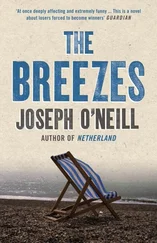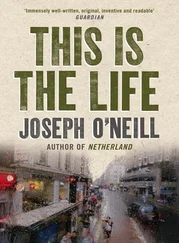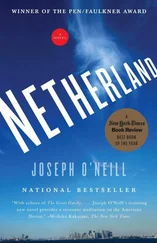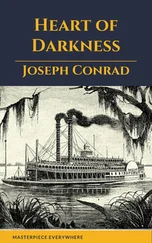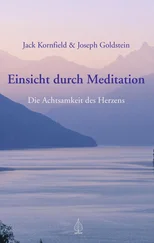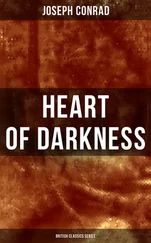Thinking how typical it was of the Turkish side of the family to reduce a profoundly political episode to a gastronomic event, I decided to check this startling news with Pierre, who, like Brendan, was perceived to be the child who’d been closest to his father. My uncle lived in Paris for most of the year, only returning to Mersin for a few months at a time to do business, and I phoned him at the Montmartre apartment of his girlfriend, Katya, which had been Picasso’s first Parisian studio. When I put the Cyprus story to him, Oncle Pierre muttered in assent. Then he said, ‘You must be very careful about writing about such things. You shall show me what you’ve written, so that I can censor it. I’m being serious. And by the way, we are not Christians. We are Christian Turks .’
When I subsequently spoke to a few other Mersin Christians of Pierre’s generation — women, mostly — about the Armenians in Cilicia, the general response was one of mystification and, in one or two cases, non-admission. More than once the phrase ‘ on ne les fréquentait pas ’ was used: We didn’t frequent them.
As with so much of Mersin’s history, I had to resort to overseas documentary sources to fill in the huge voids in the city’s oral account of its own regional past. In the case of the Adana massacres, the extraordinary testimony of an eye-witness was preserved in a Foreign Office file at the Public Records Office in London.
On the evening of Wednesday 14 April 1909, His Majesty’s Vice-Consul at Mersin, Major C.H.M. Doughty Wylie, travelled from Mersin to Adana on the train. The consul had received a note that morning from the British dragoman at Adana, Mr Trypani, that there was a very dangerous feeling in the town, and he decided to investigate. About two stations distant from Adana, Doughty Wylie noticed a body by the track. A little further on, he saw people running in panic towards the train. More bodies began to appear near the railway track as the train approached Adana.
At Adana, the consul went quickly to Mr Trypani’s house, witnessing en route the killing of two or three men in the street. Major Doughty Wylie put on his military uniform and, accompanied by an escort of four men, went by foot to the government offices. His route took him through the Armenian quarter and Armenian bazaar, and then the Turkish bazaar and the Muslim residential quarter. He found the town ‘in undescribable tumult, with heavy fighting going on in the approaches to the Armenian quarter, and murder and fires everywhere.’ A ‘howling mob’ was looting the shops, there was firing in all directions, and men were being killed in front of his eyes. At the government headquarters, the consul was met with scenes of panic and disorder and fear; the Vali, in whose very office two men had just been killed, did not dare send out troops to quell the violence.
The following morning, Doughty Wylie assembled a corps of some fifty Turkish troops. In an attempt to clear the streets, he led the men through the town with bugles blowing, but the house-to-house fighting and mayhem continued. The main bazaar was now on fire, and when Doughty Wylie was temporarily parted from his troops they became involved in an attack on an Armenian house in which all of its inhabitants were killed. The consul himself was shot in the arm by an Armenian. The violence continued until the evening of the following day, Friday 16 April, when hojas and Armenian priests finally kissed each other and made peace. Meanwhile, it was becoming clear from the inflow of Armenian refugees that terrible things were taking place in the surrounding country. In Antakya (or Antioch, where, tradition has it, the followers of Jesus Christ were first called ‘Christians’), more than 100 Armenians had been killed. In Tarsus, around 200 armed men — Kurds, mostly — jumped out of the train from Adana and engaged in systematic pillaging and, according to one American missionary, the burning of 800 houses and killing of 50 °Christians. Some Christians fled to the Tarsus American College (where seventy years later my cousins received their schooling). The Armenian inhabitants of over 200 villages in the Cilician plain, mostly peasants and farmers and seasonal migrants down from the mountains, were attacked. For example, every Armenian house in Inçirlik, the village that nowadays hosts a base of the United States Air Force, was burned to the ground.
Doughty Wylie eventually reckoned that 2000 corpses, of which around 600 were Muslim dead, were buried in Adana; an inestimable number of bodies had been thrown into the river. Wylie put the fatalities outside Adana at between 15,000 and 20,000, almost all Armenian. The French consul arrived at the figure of 30,000 dead. The Ottoman government reckoned casualties at 5400, including 418 Syrians and 62 Syrian Catholics.
Many Armenians avoided harm by fleeing to Mersin, where some caught boats to Cyprus. That Mersin saw no violence was, according to Doughty Wylie, largely due to the governor-general of Mersin — ‘the first Ottoman official there to refuse bribes and to refuse to be entirely ruled by the Greek clique’. Mersin was also the base of a flotilla of French and British warships that arrived soon after news of massacres spread abroad. The surgeon aboard the HMS Swiftsure , which sailed into Mersin on 21 April, went ashore to treat patients in makeshift hospitals. ‘The brutality and savagery of the massacre are impossible to describe,’ he later reported, noting, in descending order of frequency, wounds caused by Martini rifle bullets; swords and hatchets; clubs and sharp sticks; Mauser and revolver bullets; and bayonets.
The international naval presence had a limited deterrent effect. On the night of 25 April, there were further killings in Adana, and the Armenian quarter was burned to rubble. The statistic emerged that of the 4823 properties destroyed, 4437 belonged to Armenians.
Doughty Wylie was at a loss to explain the two massacres and by what devilry, as he put it, the Turkish peasant, ‘a kindly, honest and hospitable man, can suddenly be changed into a cruel killer of unarmed men and even in some cases of women and children’. On further reflection, he identified a variety of factors. The constitution recently proclaimed by the Young Turk government, under which Christians enjoyed equality with Muslims, was deeply offensive to the Muslim Turks. This resentment was inflamed by the ‘swaggering’ behaviour of the Christians, who, ‘with all the assertiveness of the newly emancipated, made equality to seem superiority’. This unseemly behaviour included the flaunting of weapons bought under a freshly acquired right to bear arms, and loud talk of what Doughty Wylie called ‘Home Rule’ — the establishment, with assistance of foreign powers, of an Armenian principality in Cilicia. The British consul, who regarded such talk as patently fantastical and ineffectual, commented that the ‘incurably loquacious’ Armenians ‘never seem to have thought of the possible consequences of wild words. Natives of the country, they should have known its dangers, but with the word liberty they forgot them all.’
It was against this backdrop of communal hostility that, on Thursday 8 April, an Armenian shot dead two Turks. The funeral of the men, whose bodies were carried through the town, provoked strong feelings among the ‘savage, ignorant, and fanatical’ Turks, who misconstrued the incident as a seditious attack. The atmosphere in Adana worsened, and it was at this time that Armenians who could afford to do so began to flee by train to Mersin. On Wednesday 14 April, the uneasiness was so great that shops closed and groups of armed Muslims began to gather on the streets, saying the Armenians were going to revolt; some Armenians, in their turn, regrouped and assumed defensive positions. Then, shots were fired — who fired first was never established — and the killing began. Major Doughty Wylie concluded that the real fault lay with the local Ottoman authorities, whose response to the events was culpably feeble. He found that the Muslim violence, although inexcusable, had in the main been committed by persons gripped by a real fear for their Empire, their religion and their lives. The consul (who was to be killed by Turks in 1915, leading a charge on the Gallipoli peninsula) observed, ‘Nothing is so cruel as fear.’
Читать дальше
Конец ознакомительного отрывка
Купить книгу

